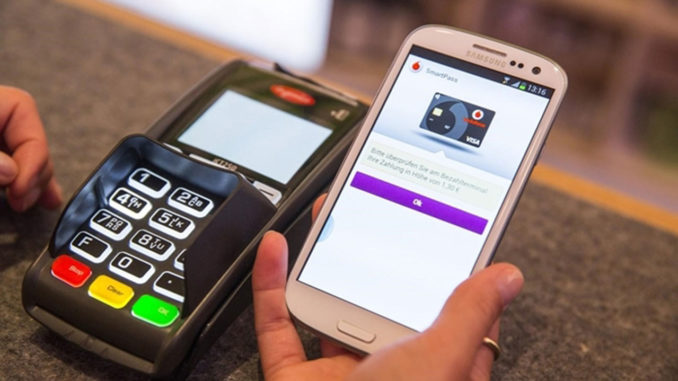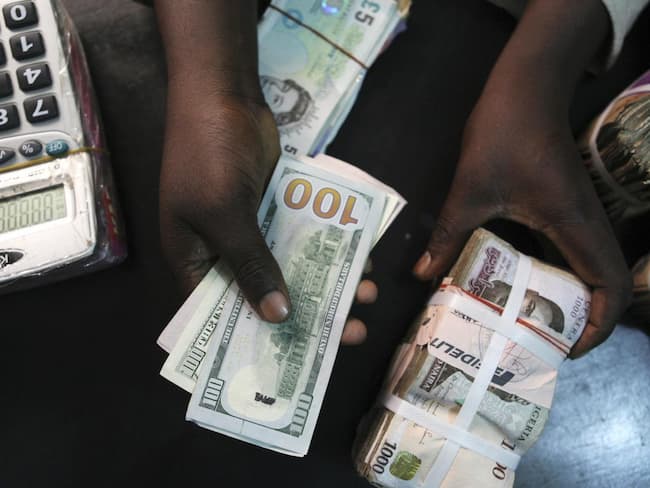Over the past decade, mobile-money services have exploded across the African continent, with an estimated 100 million people, or 1 in 10 adults, dealing in transactions worth $2.1 billion. Africa, home to many of the world’s uncharted economies, has come close to forgoing traditional brick-and-mortar banks, skipping directly to heavily using phones as wallets. According to McKinsey & Co., over half of the world’s 282 mobile-money platforms are in sub-Saharan Africa. This, by far, surpasses South Asia, the second-biggest region for mobile money in terms of market share, which currently boasts around 40 million active mobile money accounts, or 2.6 percent of adults.
The costs of physical branch expansion, along with the risks associated with serving low-income people, have often kept traditional banks at arm’s length in Africa. Due to the dearth of physical bank branches, a massive part of the continent’s population lacks the ability to engage in simple financial transactions, such as saving for the future, requesting credit to launch or grow a business, or even taking out an insurance policy. The meager rate of banking participation rate has fueled problems, both at a macroeconomic level, as well as in terms of household financial security. The existence of a primarily cash-based system can often result in greater financial insecurity among individuals, maintaining hefty amounts of currency in circulation outside of the control and influence of a country’s monetary authorities.
Egypt, Ethiopia, Kenya, Nigeria, and South Africa are among the most important mobile markets in Africa. According to the Nigerian Communications Commission (NCC), roughly 80 million Nigerians — 47 percent of the population — do not have bank accounts, an estimated 142 million Nigerians have mobile network access and approximately 92 million are internet users.
M-Pesa, which means “money” in Swahili, was initially launched by Vodafone’s Safaricom mobile operator in 2007 in east Africa’s largest economy, Kenya, as a simple method of texting small payments between users. This pioneer platform, now eleven years old, boasts more than 30 million users across 10 countries and has become the poster-child of African mobile money. M-Pesa, which initially enabled consumers and small businesses with often little or no access to a bank to send and receive money quickly and securely across great distances, now provides an array of services including international transfers, loans, and health provision. In 2016, it processed a whopping 6 billion transactions at a peak rate of 529 per second. In addition to already existing channels, M-Pesa announced earlier this week that it is going global, allowing customers to send money for pick up at more than 500,000 Western Union agent locations throughout the world.
With the plethora of inexpensive mobile phones sweeping over the continent, other African countries like Kenya have experienced a similar mobile money explosion. In fact, according to the GSMA’s 2017 State of the Industry Report on Mobile Money, 66 percent of the combined adult population of Kenya, Rwanda, Tanzania, and Uganda use mobile money on an active basis. Mobile money, which allows customers to send, receive, and store money using their mobile phone, is a subcategory of mobile financial services, or MFS, that is offered predominantly by telco companies. The actual funds are usually held by a bank linked to a current account.
Praised for their social values, these platforms have played a crucial role in notably curtailing poverty, offering opportunities for small businesses they otherwise would not have. MIT economist Tavneet Suri studied the financial and social impacts of Kenyan mobile-money services and discovered that these services have helped Kenyans increase their savings and endure financial turmoil. The study estimates that since 2008, access to mobile-money services increased daily per capita consumption levels of 194,000 — or 2 percent — of Kenyan households, removing them from extreme poverty (living on less than $1.25 per day). Interestingly, female-headed households witnessed far greater spikes in consumption than those headed by males. Furthermore, mobile-money services have aided an estimated 185,000 women pivot from farming to business occupations.
The latest edition of GSMA’s Mobile Economy report series released earlier this summer predicts that more than half of Sub-Saharan Africa will be connected to mobile by 2025. The report anticipates that in the next seven years, unique mobile subscribers will increase from 444 million to 634 million. While 40 percent of the region’s population is under the age of 16- a demographic with notably inferior levels of mobile ownership than the rest of the population, as they age, an even bigger mobile explosion will likely follow.
Fees in African mobile network operators remain among the highest in the world, at roughly two percent of the transaction amount. McKinsey & Co. predicts that annual revenues can approach $29 per year per active registered user. Africa’s two leading mobile network operators, M-Pesa and MTN Money, garner an estimated $500 million and $200 million in annual mobile financial services revenues, respectively.
Despite banks and fintechs, loosely defined as any technological innovation in financial services, infiltrating the market, mobile network operators continue to account for the lion’s share in terms of customer numbers. MTN, the largest telco in Africa, boasts 171 million customers, whereas prominent pan-African banks like Ecobank, Standard Bank, and Barclays Africa typically service between 11 million and 15 million customers. Why? Convenience. Over the past ten years, mobile network operators have built scale and momentum in mobile payments based on a simple business model: one that offers a plethora of distribution networks and an exceptional client experience.
Once an underdog in Africa’s crusade to advocate financial inclusion through mobile network operators, Ghana is proving skeptics wrong, giving many East African markets a run for their money. According to the 2017 Global Findex data, Ghana was the fastest growing mobile money market in Sub-Saharan Africa since 2014. In 2014, just 13 percent of Ghanaian adults owned a mobile money account. As of 2017, 39 percent of Ghanaian adults were mobile money account owners — a three-fold growth. This explosion is largely attributed to a change in the Bank of Ghana’s 2008 Branchless Banking Guidelines, which previously created obstacles for mobile money curbing e-money issuance and agent recruitment of at least three licensed banks. Among other things, the new guidelines now allow MNOs to own and operate mobile money networks under the central bank’s supervision.
Zimbabwe, also, has witnessed a true dash from cash in recent years. In 2009, during the aftermath of one of the most extreme episodes of hyperinflation in history, Zimbabwe abandoned its currency and adopted the US dollar. However, over the past two years, the country has been rocked by a severe, ongoing shortage of cash. By 2017, electronic payments accounted for 80 percent of all transactions. The Zimbabwean Finance Ministry predicts that, so far this year, an estimated 1.7 billion transactions have occurred through mobile money, a notable rise from the 50 million transactions recorded just four years ago. In a desperate new attempt to secure additional revenue within the cash-strapped country, Zimbabwe’s government has increased statutory taxes on mobile money and electronic transactions. According to Finance Minister Mthuli Ncube Mobile, money transfer tax has been revised from 5 cents per transaction to 2 cents “per dollar” transacted, effective immediately.
According to the Bank of Tanzania (BOT), from July 2017 to April 2018, mobile money transactions amounted to 3.3 trillion Tanzanian shillings ($1.4 billion), marking a 104.7 percent increase in volume and 78.9 percent in value compared to the same period of 2016/17. As of April 2018, the number of active registered accounts for mobile money stood at 19.5 million, a nearly 13 percent increase from the 17.3 million recorded users as of April 2017. Tanzania boasts a mobile money penetration rate of 65 percent in urban areas and about 25 percent in rural areas.
While Africa leads the mobile money revolution, slowly shifting the way the world looks at money, challenges remain around interoperability and accessibility. Two of the most difficult to reach groups are, for example, rural and female customers. Increasing amounts of investment and innovation are being aimed at addressing these untapped commercial opportunities. According to the GSMA, low literacy rates and lack of trust hinder women’s ability or readiness to use mobile money.
The reality is that concerns over the endemic prevalence of counterfeit money, dearth of monetary regulation, capacity, and restricted access to traditional banking services make mobile money a compelling substitute for cash. There is a large opportunity to increase mobile money penetration throughout the continent, as a growing number of companies are frantically tapping into this market by digitizing payments, in an attempt to offer improved reach and transparency for players in the financial market.













